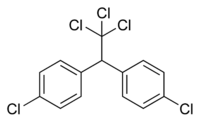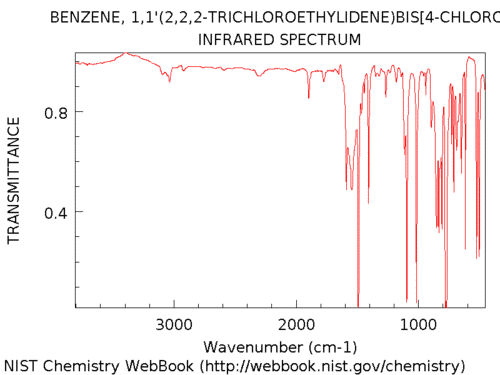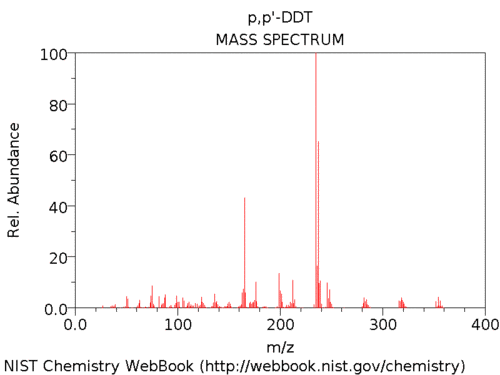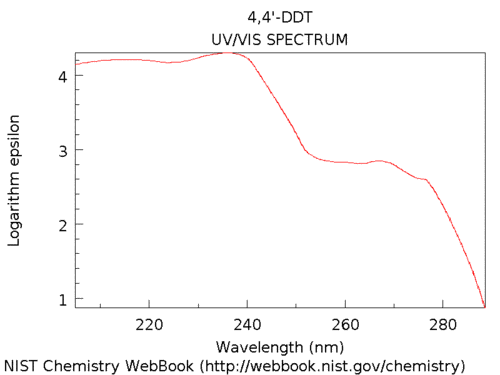It:DDT
| DDT | |||
|---|---|---|---|

| |||
| 3D Structure | |||
| Chemical name | 4,4'-(2,2,2-trichloroethane-1,1-diyl)bis(chlorobenzene) | ||
| CAS nummber | 50-29-3 | ||
| Chemical formula | C14H9Cl5 | ||
| Molecular mass | 354.49 g/mol | ||
| Melting point | 108.5 °C | ||
| Boiling point | 260.0 °C | ||
| SMILES | [ClC(Cl)(Cl)C(C1=CC=C(Cl)C=C1)C2=CC=C(Cl)C=C2 | ||
| Colour | colorless | ||
Introduction
DDT is arguably the best known organic pesticide, which was developed as the first of the modern insecticides early in World War II.It is a highly hydrophobic colorless solid with a weak, chemical odor that is nearly insoluble in water but has a good solubility in most organic solvents, fat, and oils. It was initially used with great effect to combat mosquitoes spreading malaria, typhus, and other insect-borne human diseases among both military and civilian populations, and as an agricultural insecticide.
Problems
DDT is fat soluble and is not metabolised by the body readily. With a biological half life of 8 years, this results, this results in the DDT being deposited in the fatty tissues of the animals. This causes problems when the animals are eat by humans as bioaccumulation occurs.
DDT was also found to be extremely toxic towards fishes, and resulted in fall in fish populations around the world.
Resistance to DDT also developed in insects, reducing the effectiveness of the insectide.
Spectra
IR Spectrum
Mass Spectrum



